The Gift of South Dakota
Subscriptions to South Dakota Magazine make great gifts!
Subscribe today — 1 year (6 issues) is just $29!
Stories Beneath the Stones
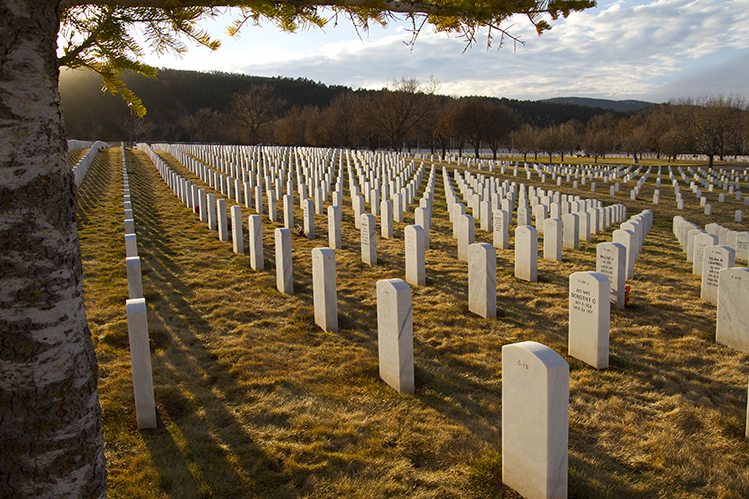 |
| Black Hills National Cemetery near Sturgis is the largest national cemetery in South Dakota. Photo by Buck Lovell. |
Seventy years ago, sailor Daniel Baughman sent a letter home to his family and it has never been opened. Baughman, who was serving on a submarine during World War II, presumably wrote another of his typically upbeat letters. He was safe. Don’t worry.
Military personnel arrived at the sailor’s house ahead of the letter. He was lost at sea, they said. He wouldn’t be coming home. Later, the postman delivered the letter.
Only the family knows why the letter was never unsealed.
Maybe the pain of reading the young sailor’s optimistic words while knowing his true fate simply felt overwhelming. Or maybe preserving an object as he last saw it, un-torn, brought comfort and froze an earlier moment in time. Whatever the case, the letter is a personal memorial to one soldier, and there are hundreds more across the state in the form of carefully kept letters, photos and dog tags. Wherever the American military has engaged in combat or peacekeeping the past 120 years, South Dakotans have served — sometimes in numbers that lead all other states per capita.
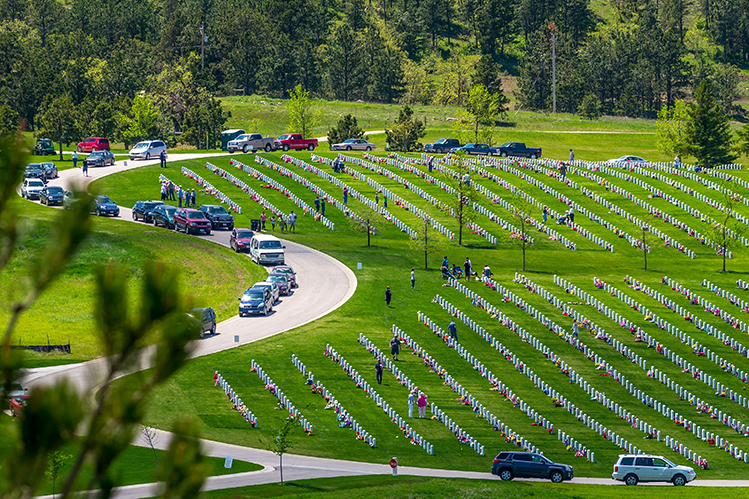 |
| The U.S. Department of Veterans Affairs provides the stark white gravestones emblematic of national cemeteries. Photo by Ryan Clayton. |
Public memorials have been constructed in many South Dakota towns, including the state capitol grounds in Pierre where life-size statues represent all branches of the military. Thousands of grateful people will visit those locations to remember fallen and surviving soldiers this Veterans Day, and many will also gather in western South Dakota’s five national cemeteries. Most veterans laid to rest in those cemeteries were not combat casualties. Most left the service, entered professions, raised families and lived many more years as former soldiers than enlisted soldiers.
But there’s something powerful about committing a deceased family member back to the ranks of the military, back to the beautiful straight lines and uniformity that mark national cemeteries, back to military precision.
Visitors to our national cemeteries might wonder how western South Dakota got five when there are entire states with none. Our state’s impressive per capita enlistment rate hardly seems to justify five national cemeteries in a state with fewer than a million residents.
South Dakota’s frontier military history, along with astute national politicians and Native people who seized a 2006 ruling that allows tribal governments to establish national cemeteries, all contribute to the state’s surprising number. Yet visitors to any of the five might simply conclude that beautiful landscapes, starry black skies far from urban lights and an overall sense of tranquility make West River South Dakota an unparalleled location for memorial grounds.
The national cemetery movement took root during the Civil War. Proponents believed that the federal government owed deceased soldiers a place of eternal rest. In 1862, the war’s second year, Congress authorized President Abraham Lincoln to set aside lands for burials for Union veterans. Tragically, because the war was so horrific, these cemeteries quickly grew to great size. In the East they became prominent landscape features, instantly recognizable.
No part of the federal bureaucracy was more eloquently defined than national cemeteries, thanks to language President Lincoln used in November of 1863 when he dedicated the burial grounds at Gettysburg, Pennsylvania. Lincoln’s description of hallowed ground consecrated by the blood of soldiers, living and dead, still resonates — as does his call for Americans who visit to “resolve that these dead shall not have died in vain.” Inscriptions of the Gettysburg Address are standard features of national cemetery designs.
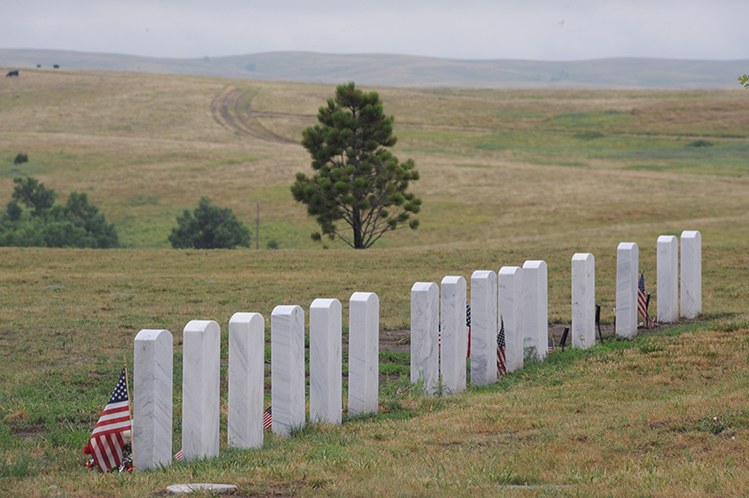 |
| Only a few burials have occurred at a new 18-acre cemetery on the Pine Ridge Reservation near Kyle. |
South Dakota’s biggest, Black Hills National Cemetery, sits at the eastern edge of the Hills near Sturgis. It turns 70 years old in 2018 and continues to expand, with more than 650 burials annually. Views combine the dark ridge of the Black Hills, rugged foothills and Bear Butte rising to the east. U.S. Senator Francis Case, who led the way to secure the cemetery and was himself a World War I veteran, is buried there.
Two national cemeteries categorized as historic, no longer open to burials, are at Hot Springs — longtime site of state and federal medical and residential services for veterans — and at Fort Meade outside Sturgis. Veterans as far back as the Civil War and Army campaigns against American Indians were laid to rest at the two historic graveyards. Civil War Medal of Honor recipient Charles L. Russell is buried at Hot Springs. The New York state soldier was recognized for gallantry during the bloody battle of Spotsylvania Court House in Virginia, and later he headed west.
By contrast the two newest national cemeteries in the state are on the Rosebud and Pine Ridge reservations. Sicangu Akicita Owicahe Veterans Cemetery (Rosebud) and Akicita Owicahe Lakota Freedom Veterans Cemetery (Pine Ridge) came about after the U.S. Veterans Administration opened its cemetery grants to tribal governments. The VA recognized that Native people have long enlisted in numbers exceeding the national average, and that many reservations in the West are a long drive from other VA cemeteries. Rosebud’s tribal government was the first to apply, won a $7 million grant, and opened its cemetery in 2013. The grant was the first of its kind awarded to a sovereign tribal nation and resulted in a unique, turtle-shaped cemetery layout. Turtles, in Lakota tradition, represent longevity and fortitude.
Pine Ridge wasn’t far behind its neighbor reservation, and its national cemetery occupying 18 acres opened in 2014 east of Kyle. Both reservation cemeteries honor those interred as United States soldiers and Lakota warriors. United States, tribal and POW/MIA flags fly in the prairie winds.
A handful of national cemeteries operate under the auspices of the Army (Arlington outside Washington, D.C., for example) or National Park Service (Custer National Cemetery at Little Bighorn Battlefield in our region). But most, including all five in South Dakota, are part of the VA’s National Cemetery Administration.
About the same time the National Cemetery Administration decided to support new reservation burial grounds, its leaders began thinking about what they call “stories beneath the stones,” some of them along the lines of the submariner’s unopened letter. Or, just as important, stories about what veterans who survived their service did with the rest of their lives.
The NCA selected three universities nationally to research those stories, including Black Hills State University in Spearfish. “This is a phenomenal way for our students to look at big national history through intimate, local stories,” says Kelly Kirk, a history instructor at BHSU and the project’s coordinator. Much of the initial research was done this past summer. “Once the community realized we were doing veteran research, they reached out to undergraduates,” Kirk says.
 |
| The concept of national cemeteries came during the Civil War. Veterans of that conflict are buried at Fort Meade. Photo by Stephen Gassman. |
Student researcher Sidney May appreciated “the incredible connections I was able to make with people,” and the details families shared. She emailed back and forth with the Huntsville, Alabama family of Andy Andrews — and learned he earned his wings as an Air Force jet pilot before age 18, flew in Korea, and built a distinguished military resume that made him eligible for interment at Arlington National Cemetery had his family wished it. Red Pesek’s family told May that he fought German troops in Europe and also read Mein Kampf to better understand his enemy. Andrews and Pesek are buried at Black Hills National Cemetery.
Recent graduate Courtney Buck met a woman with an unusual set of World War II letters written by her parents, Patrick and Shirley O’Leary, when Patrick was stationed in Europe. Shirley kept not only Patrick’s letters but also her own, so that “we were able to see directly into the world of a soldier and his family statewide,” Buck says. “These letters are very rare because it’s hard to find someone who copied their letters before they were sent overseas.” The O’Learys are interred at Black Hills National Cemetery, and their story led Buck to the story of Daniel Baughman, the submariner lost at sea who wrote the never-opened letter. He was Shirley’s brother.
Buck also delved into the past of John Bear King. Buried at Black Hills National Cemetery, he was a member of the Standing Rock Sioux Tribe who served as a World War II code talker. She was struck by a historic irony. “John Bear King was able to use his native language of Lakota to pass on messages and information from their reconnaissance missions that the Japanese were unable to decode,” Buck says. “At one time the United States government tried to wipe out the Native American languages, then in World War II they were using it to their advantage, and it became a crucial part of communication.”
Another BHSU student, Katie Haigh, researched 19th century veterans whom no one alive remembers, relying primarily on newspaper archives. She studied the stories of two Medal of Honor recipients laid to rest at Fort Meade National Cemetery. Albert Knaak was a long-serving ordnance sergeant when he died at the fort in 1897, and it appears he never told anyone in South Dakota that he won the prestigious medal for actions in Arizona Territory. His grave marker made no mention of the honor, and the fact was buried with him for 79 years, until a study during the United States Bicentennial revealed the truth. Abram Brant was all set to receive his Medal of Honor at Fort Meade in 1878, two years after he risked his life carrying water for fellow soldiers at Little Bighorn. The night before the ceremony, apparently while engaged in drunken tomfoolery, he accidentally shot himself and died.
Less dramatic but just as significant, Kirk says, are stories that explain why men or women entered a certain branch of the service, where their enlistment took them, what brought them back to South Dakota and how their experiences shaped their post-military careers. About 25 students are conducting research, and what they discover will be made public in online documents and as part of materials prepared for school use.
Whether inspirational, ironic or profoundly sad, the soldiers’ stories add power to the already poignant sight of white markers gleaming under wide Dakota skies in five national cemeteries.
Editor’s Note: This story is revised from the November/December 2017 issue of South Dakota Magazine. To order a copy or to subscribe, call (800) 456-5117.


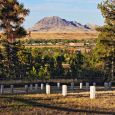
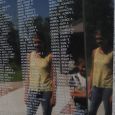
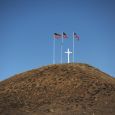

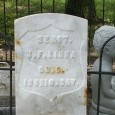



Comments
My knowledge of the Black Hills National Cemetery had been reinforced by my parents, Virgil Earl & Betty Jean Stevens burial “together”.
For years, I have been personally telling each member of our South Dakota US Congregational Delegation to never forget SD Citizens who are buried in our National Cemeteries and always provide funding to always meet the needs to continue to manage these cemeteries in a dignified manor!
William Robert Stevens